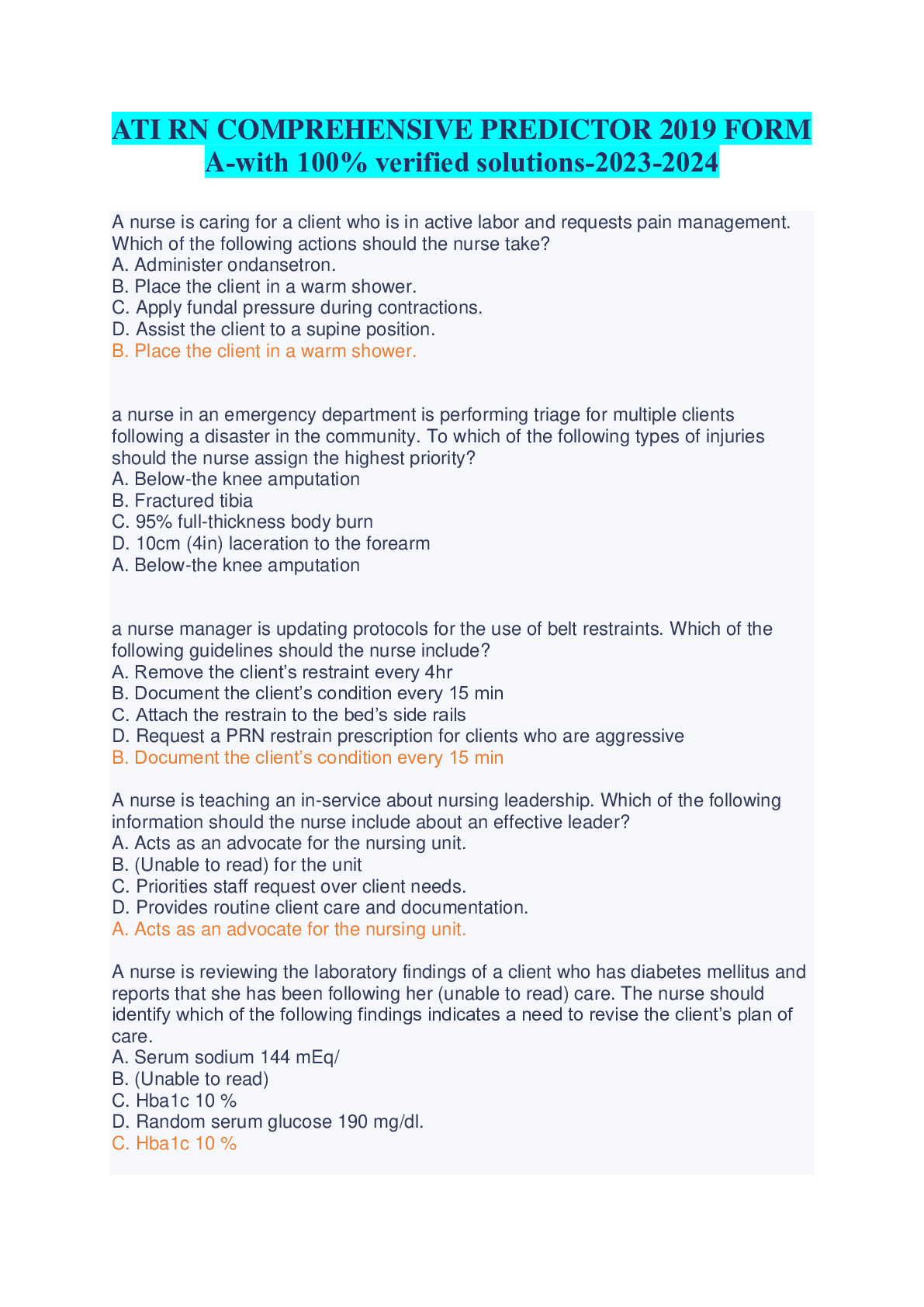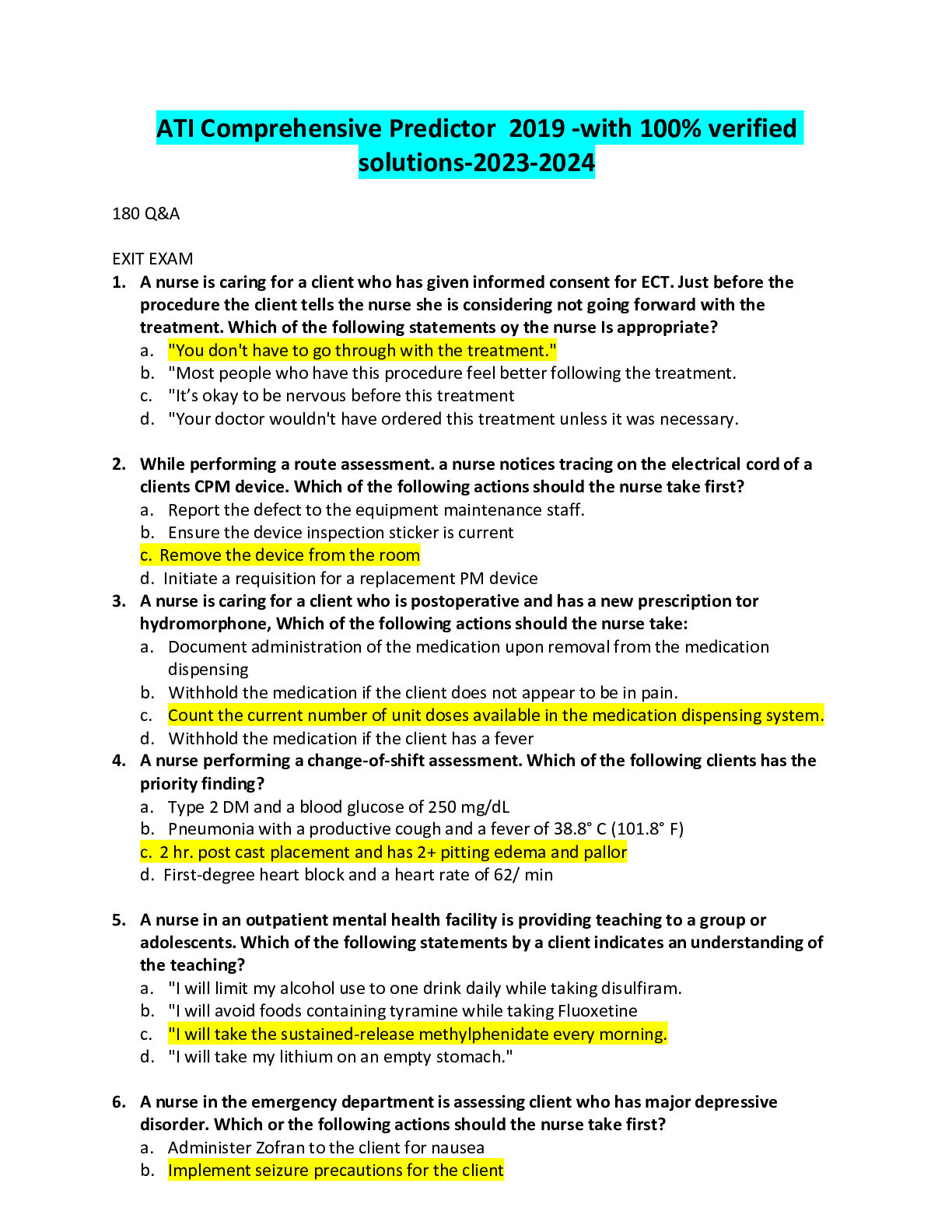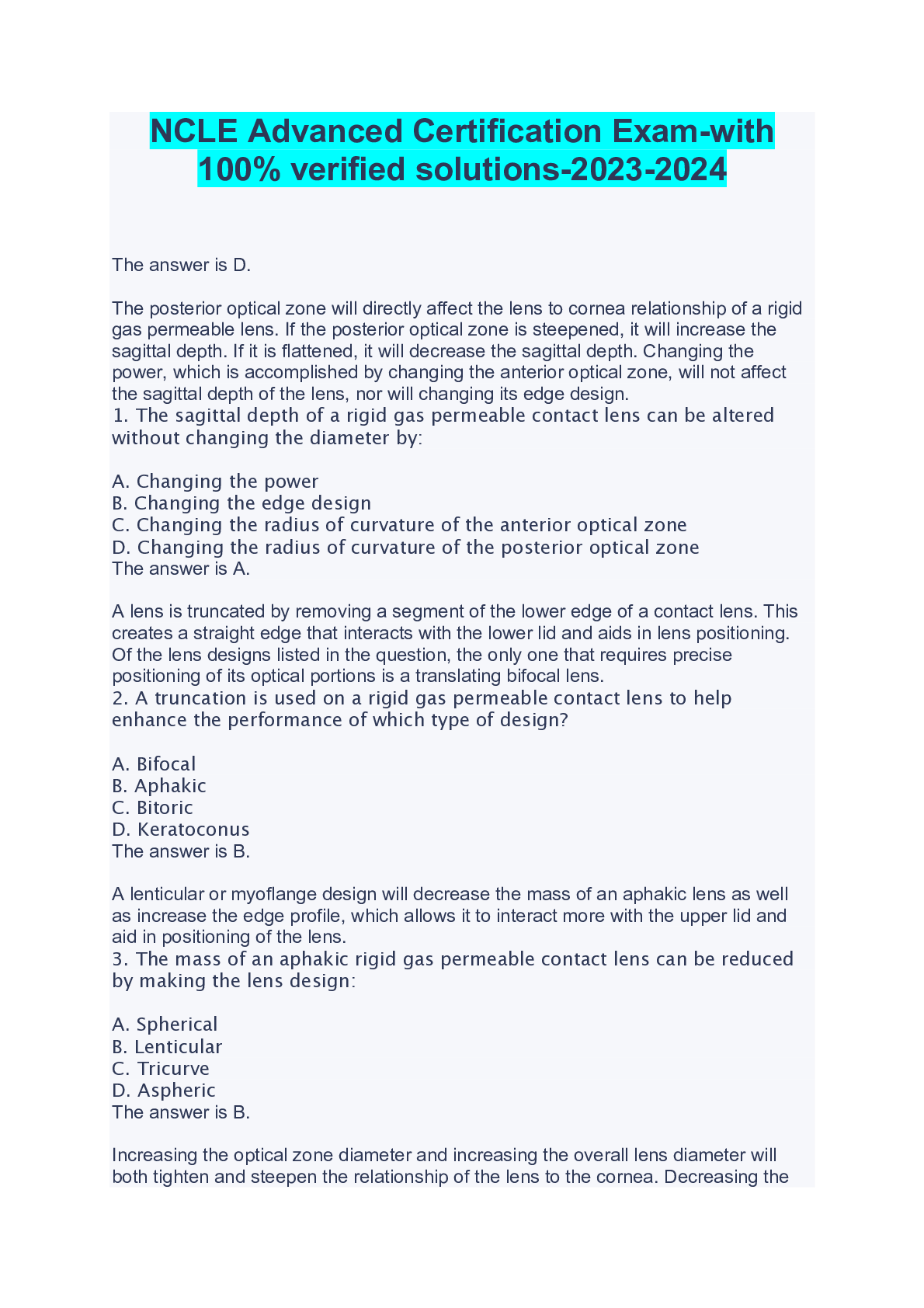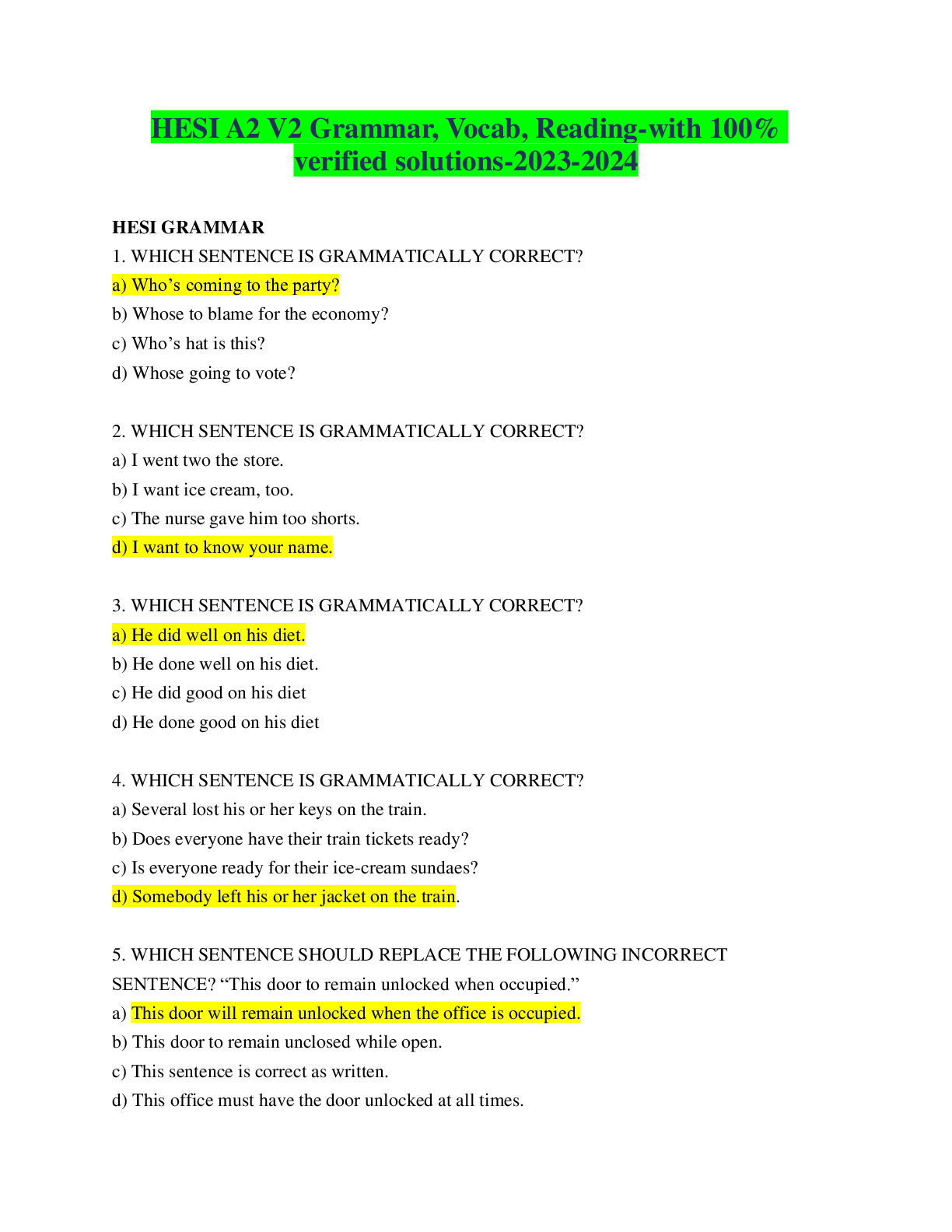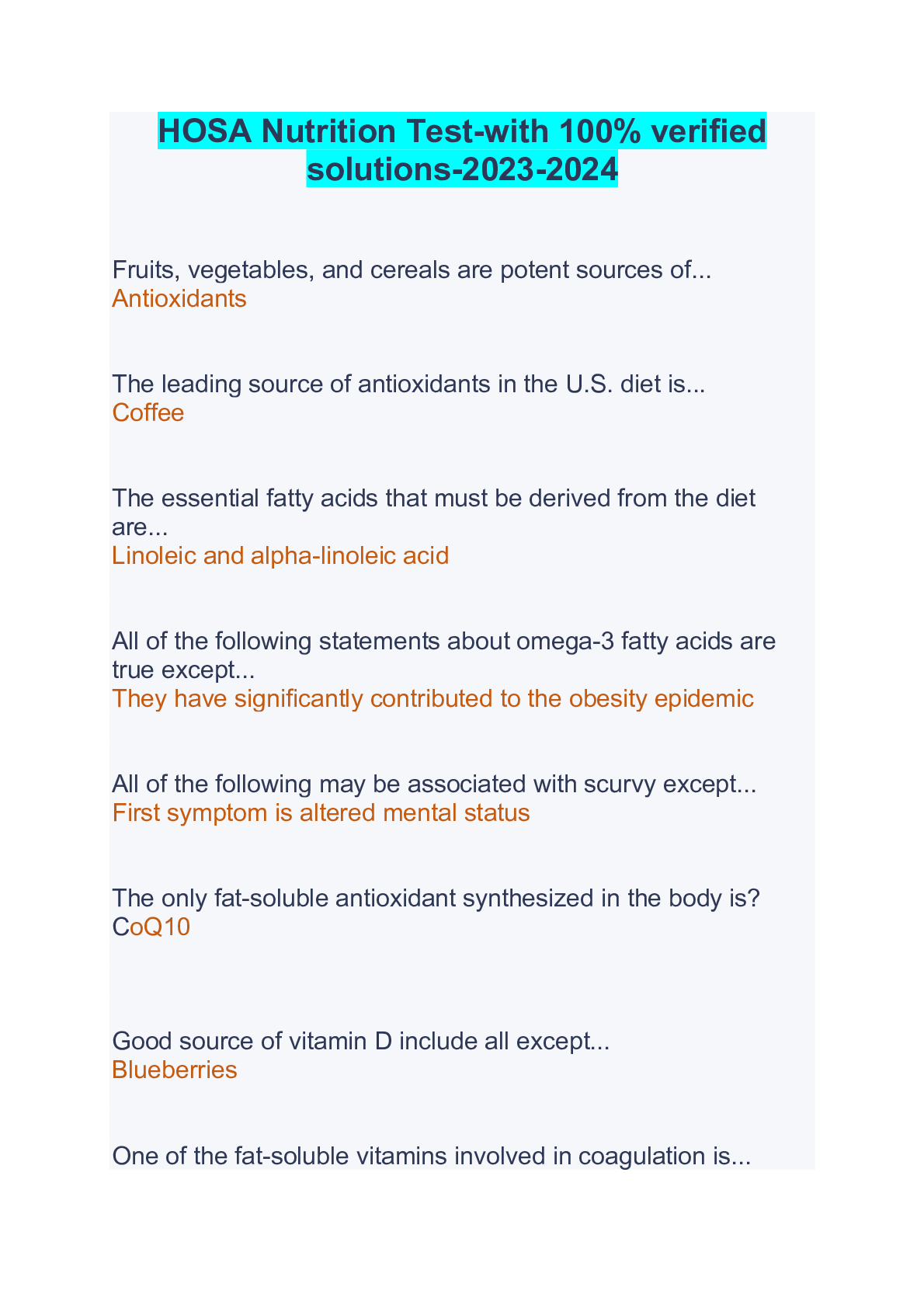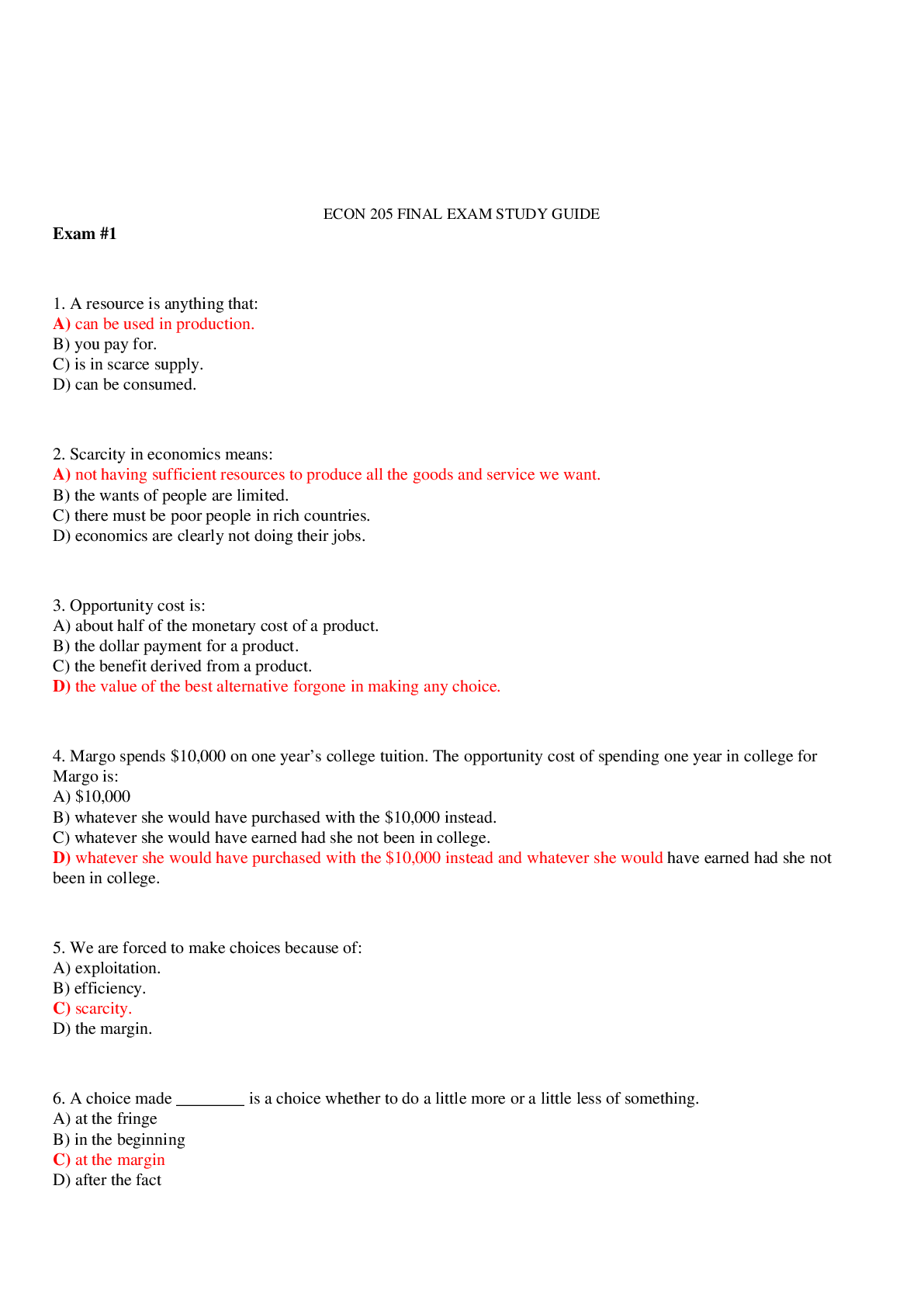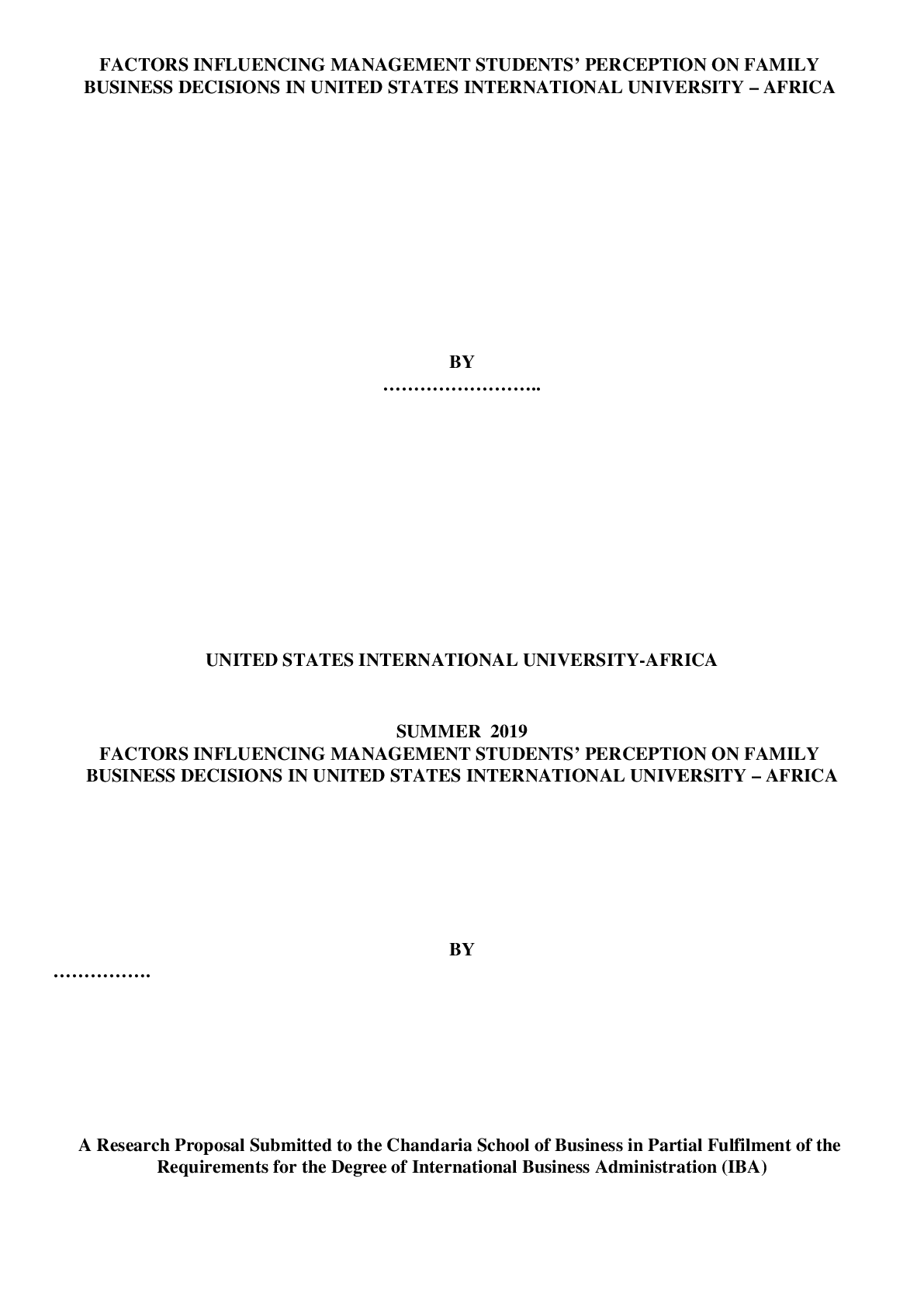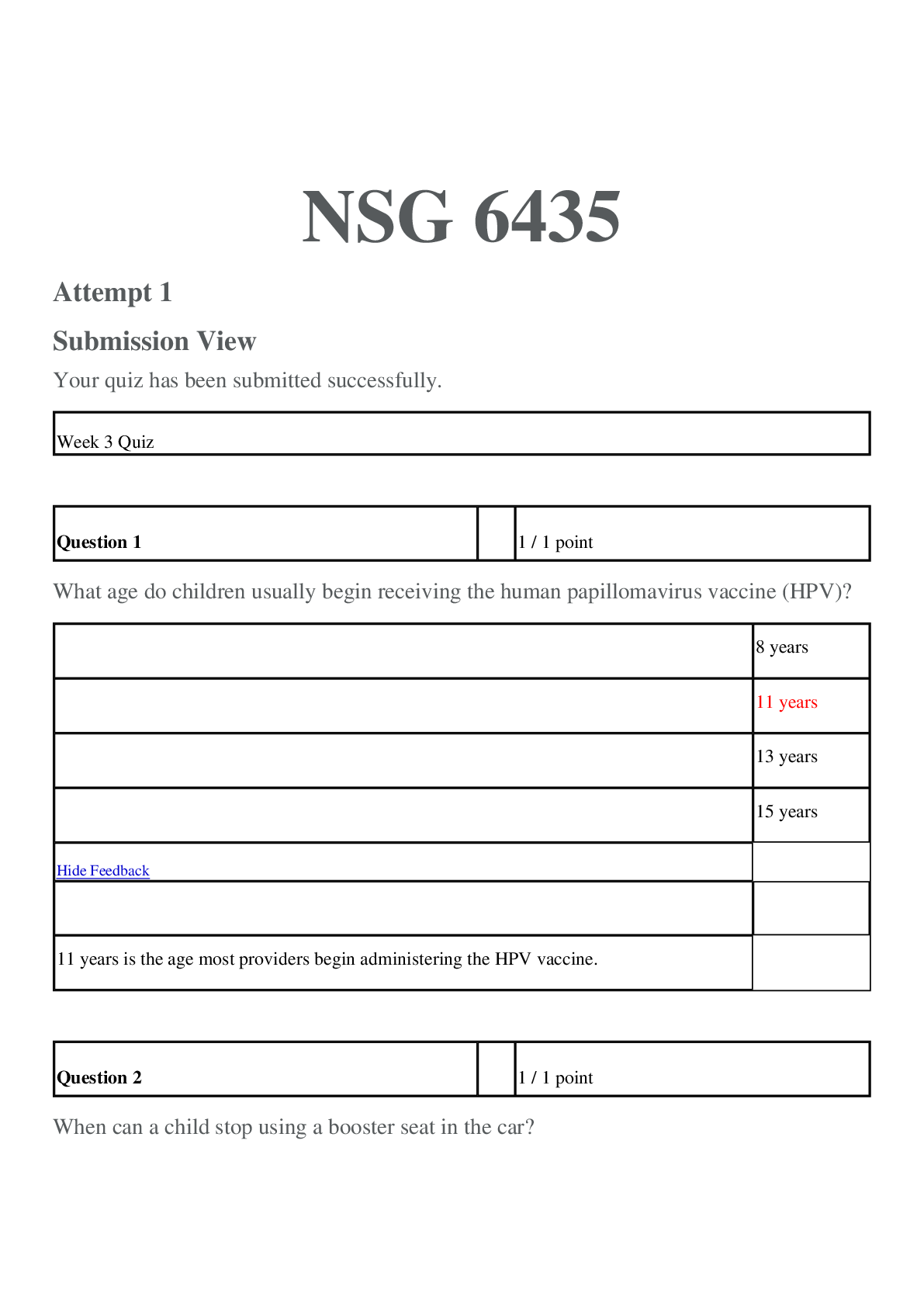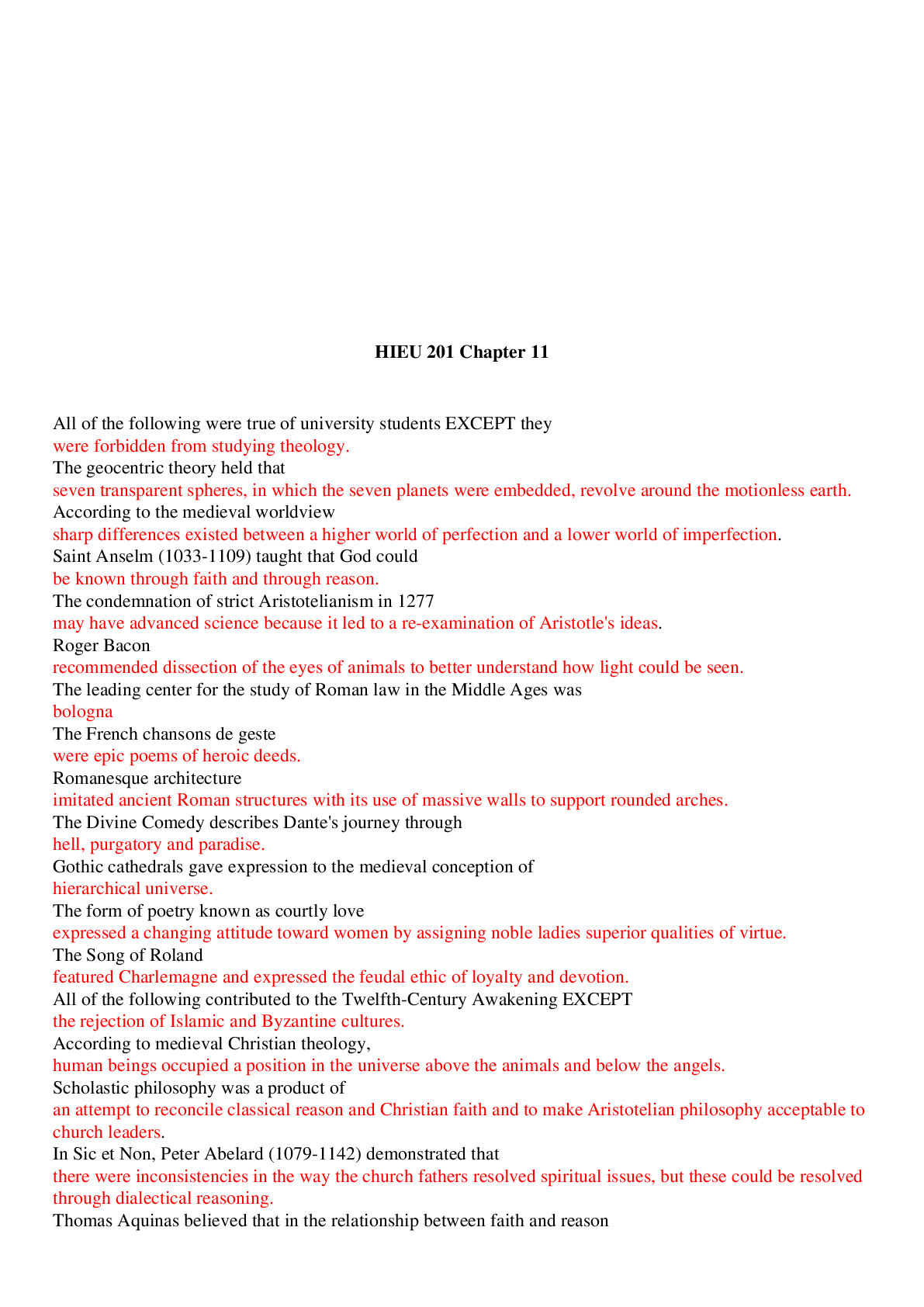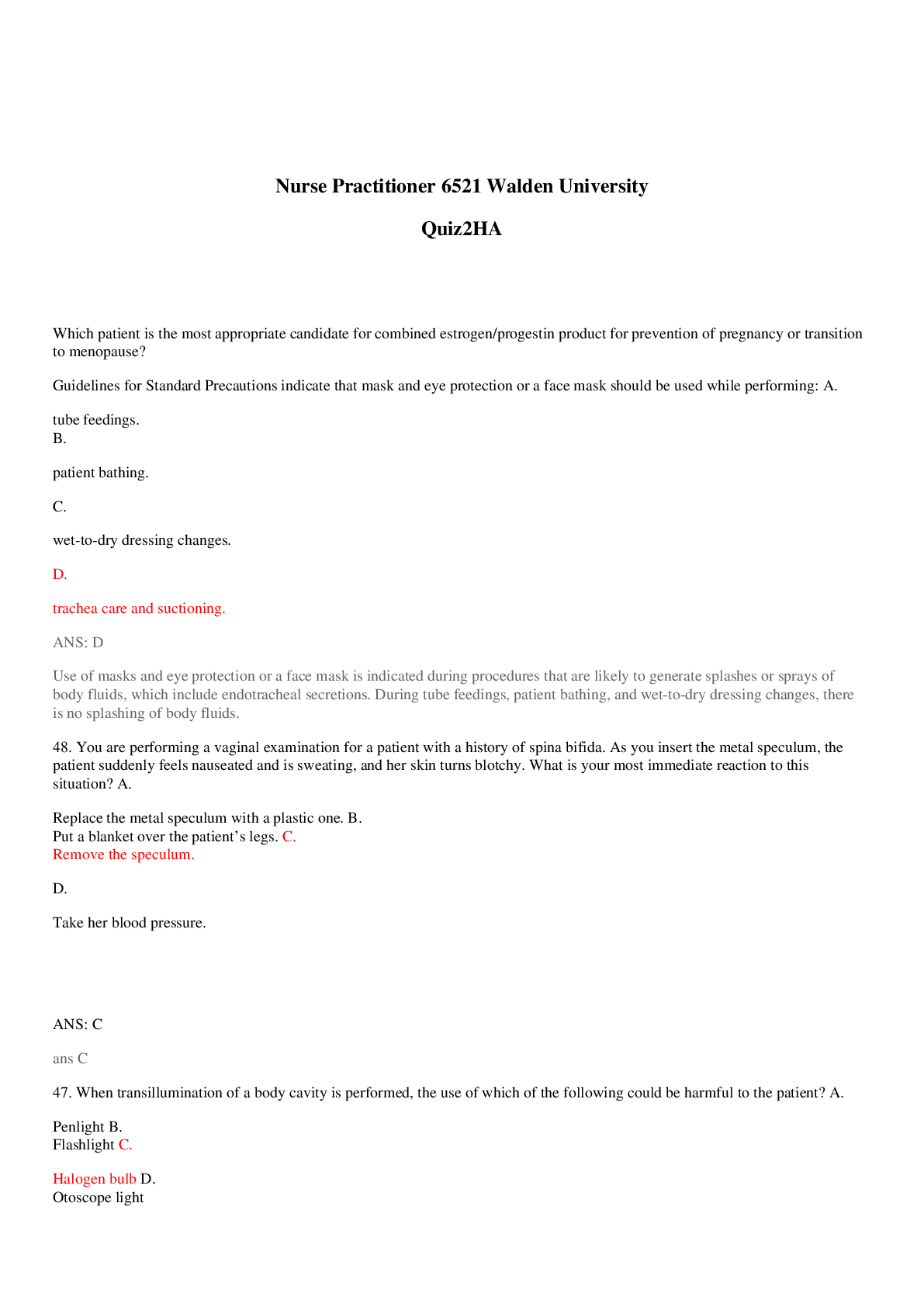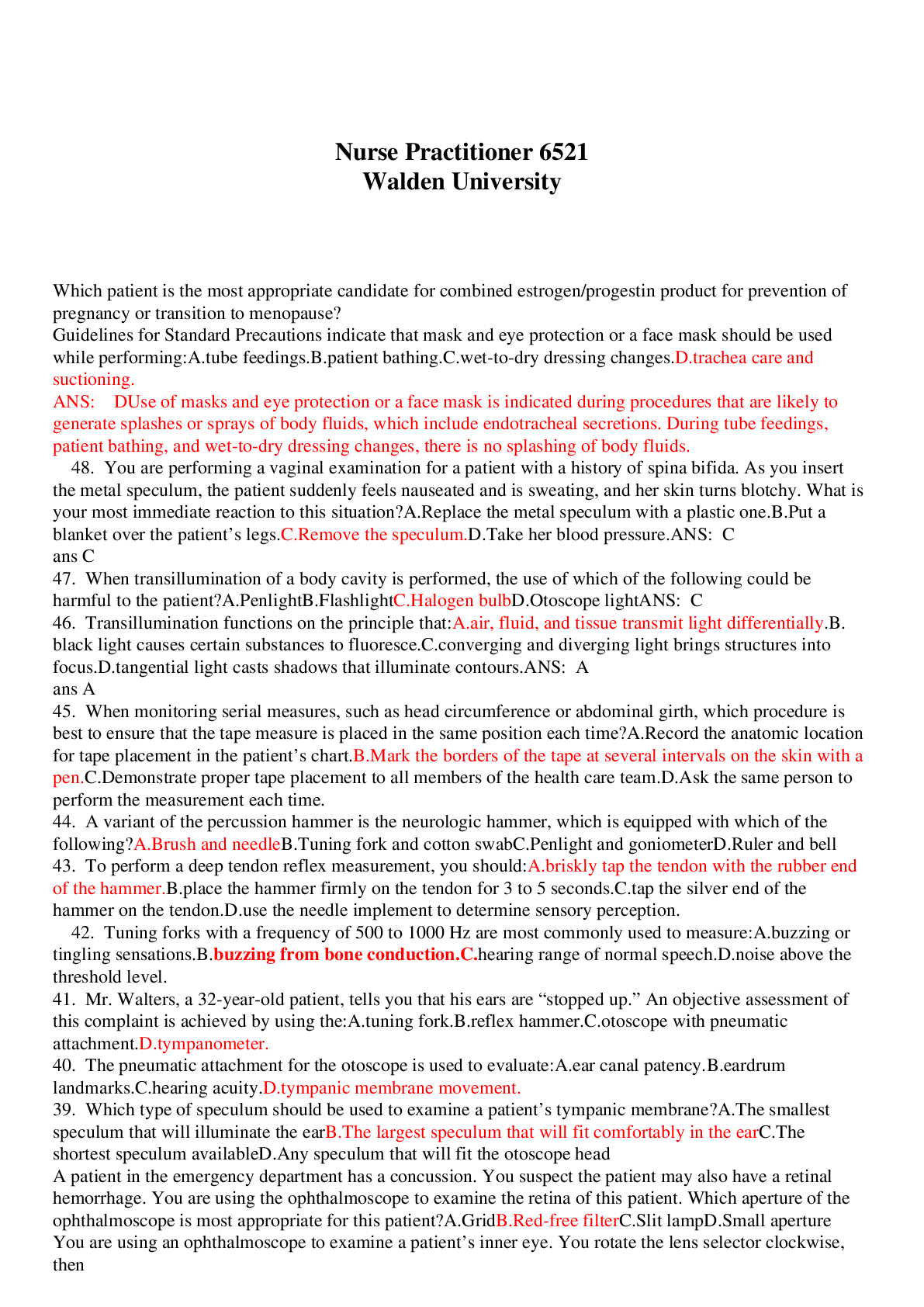NR 228-Nutrition exam 2
Document Content and Description Below
The nutrient that provides the densest energy source is a. fat. b. protein. c. alcohol. d. carbohydrate. Sex hormones, bile, and vitamin D are formed in the body from a. sterols. b. trigl... ycerides. c. phospholipids. d. chylomicrons. If a patient receiving fat-free parenteral nutrition develops eczema, the patient may have a. vitamin C deficiency. b. essential fatty acid deficiency. c. protein-energy malnutrition. d. phospholipid and sterol deficiency. Hydrogenation of vegetable oils their shelf life and makes them harmful to health. a. decreases; less b. increases; less c. decreases; more d. increases; more A triglyceride is a compound composed of a. glycerol with two fatty acids attached. b. glycerol with three amino acids attached. c. glycerol with three fatty acids attached. d. organic molecules formed in triangular chains. A polyunsaturated fatty acid is a fatty acid with bond(s) on the carbon chain. a. one double b. no double c. oxidized d. two or more double If a client wants to lose 1 lb of body fat each week, they would need to make sure that their daily calorie intake was lower than their daily energy needs by kcals/day. a. 350 b. 500 c. 900 d. 3500 B In their natural form, most oils come from products and most solid fats come from products. a. natural; processed b. organic; refined c. animal; plant d. plant; animal The number of double bonds present in the fatty acid chain determines the a. number of fatty acids attached to the glycerol molecule. b. number of glycerol molecules attached to the fatty acid. c. degree of saturation or unsaturation of a fatty acid. d. degree of saturation or unsaturation of the glycerol molecule. By interfering with blood clotting, omega-3 fatty acids appear to lower the a. risk of hypertension. b. risk of heart disease. c. levels of serum triglyceride. d. levels of serum cholesterol. Overall energy intake can be greatly affected by relatively small changes in intake of a. protein. b. carbohydrate. c. fat. d. alcohol. The number of kcals provided by 23 g of fat is a. 92. b. 161. c. 207. d. 230. If dietary analysis shows that fat provides 31% of an individual's energy intake, their fat intake would be considered to be CONTINUED..... [Show More]
Last updated: 1 year ago
Preview 1 out of 24 pages
Instant download
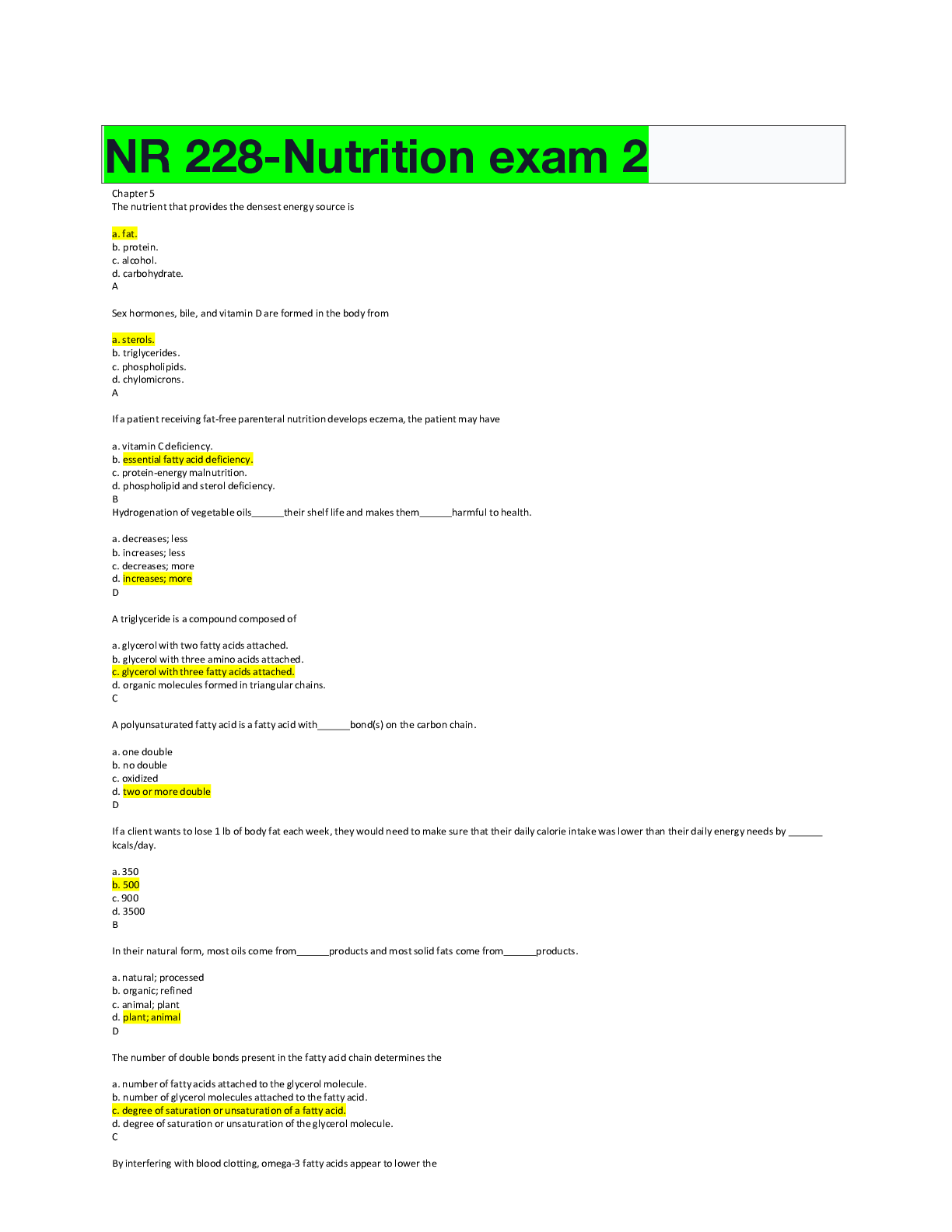
Buy this document to get the full access instantly
Instant Download Access after purchase
Add to cartInstant download
Reviews( 0 )
Document information
Connected school, study & course
About the document
Uploaded On
Mar 22, 2022
Number of pages
24
Written in
Additional information
This document has been written for:
Uploaded
Mar 22, 2022
Downloads
0
Views
46



